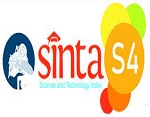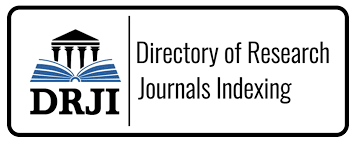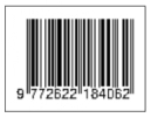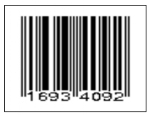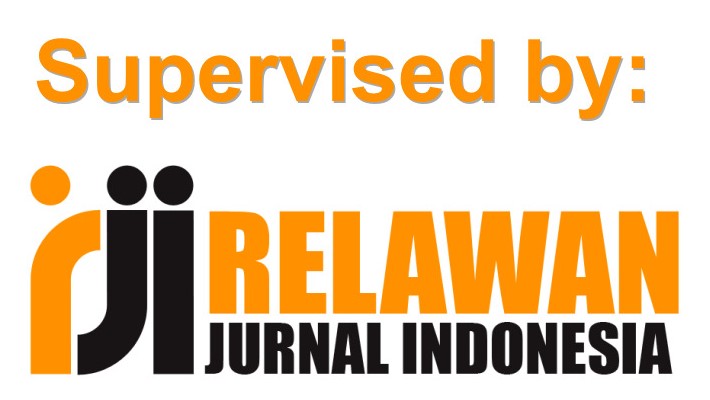Pengaruh Inovasi Produk dan Kualitas Produk Terhadap Keunggulan Bersaing pada UMKM Roti Gembong Gemmoy Kota Prabumulih
DOI:
https://doi.org/10.31851/jmwe.v22i1.18449Abstract
ABSTRAK
Tujuan dari penelitian ini ialah guna mengetahui bagaimana kualitas produk dan inovasi memengaruhi keunggulan bersaing pada UMKM Roti Gembong Gemmoy Kota Prabumulih. Partisipan dipenelitian ini terdiri dari pemuja Roti Gembong Gemmoy dan konsumen setia yang melakuukan pembelian roti memakai aplikasi WhatsApp. Dipenelitian ini, teknik pengambilan sampel dipakai Accidental Sampling, dan jumlah sampel sejumlah 158 responden ditentukan dengan memakai Slovin. Memanfaatkan metodologi penelitian kuantitatif, kuesioner ialah alat pengumpulan data. Temuan penelitian menampakkan adanya hubungan substansial (t = 11,593; ambang batas signifikansi = 0,000 < 0,05) antara inovasi produk dan keunggulan kompetitif. Hal ini menampakkan bahwaa tingkat signifikansinya < 0,05 dan nilai t hitung > nilai t tabel yang berarti signifikan. Keunggulan kompetitif dipengaruhi oleh kualitas produk. Berdasar pada nilai t hitung sejumlah 22,837 dan nilai signifikansi sejumlah 0,000 yang menampakkan bahwaa nilai t hitung > nilai t tabel dan tingkat signifikansi > (0,05) maka hal ini bisa dikatakan berpengaruh. Uji koefisien determinasi atau R square menghasilkan nilai sejumlah 0,774 atau 77,4% yang menampakkan bahwaa pada UMKM Roti Gembong Gemmoy Kota Prabumulih variabel inovasi produk dan kualitas produk bisa memengaruhi variabel keunggulan bersaing. Sisanya sejumlah 22,6% dipicu oleh faktor-faktor di luar cakupan penelitian ini.
Kata Kunci: Inovasi Produk, Kualitas Produk, Keunggulan bersaing.
ABSTRACT
The aim of this research is to find out how product quality and innovation influence the competitive advantage of Roti Gembong Gemmoy MSMEs in Prabumulih City. Participants in this research consisted of devotees of Gembong Gemmoy Roti and loyal consumers who purchased bread using the WhatsApp application. In this research, the sampling technique used Accidental Sampling, and the sample size of 158 respondents was determined using Slovin. Utilizing quantitative research methodology, questionnaires are a data collection tool. Research findings reveal a substantial relationship (t = 11.593; significance threshold = 0.000 < 0.05) between product innovation and competitive advantage. This shows that the significance level is <0.05 and the calculated t value is > the t table value, which means it is significant. Competitive advantage is influenced by product quality. Based on the calculated t value of 22.837 and a significance value of 0.000 which shows that the calculated t value > t table value and the significance level > (0.05) then this can be said to be influential. The coefficient of determination test or R square produces a value of 0.774 or 77.4% which shows that in the UMKM Roti Gembong Gemmoy, Prabumulih City, product innovation and product quality variables can influence competitive advantage variables. The remaining 22.6% was triggered by factors outside the scope of this research.
Keywords : Product Innovation, Product Quality, Competitive Advantage.
References
Arinawaty, E., dan B. Suryadi. (2021). Penataan Produk (C3) Kompetensi Keahlian : Daring dan Pemasaran. Penerbit Grasindo : Jakarta
Bagaskara, T.,B (2019). Pengaruh Inovasi Produk, Desain Produk dan Kualitas Produk Terhadap Keunggulan Bersaing Pada Produk Woodenwey. Skripsi Program Studi manajemen Fakultas Ekonomi, Universitas Islam Indonesia , Jakarta.
Daga (2017). Citra, Kualitas Produk, Dan Kepuasan Pelanggan. Makassar: Global Research And Consulting Institute.
Danang, S. (2015) Keunggulan Bersaing (Competitive Advantage)Yogyakarta: CAPS (Center for Academic Publishing Service).
Fajrina, F.,N & Yamit, Z (2022). Pengaruh Inovasi Produk, Desain Produk dan Kualitas Produk Terhadap Keunggulan Bersaing pada Produk Maybelline di Yogyakarta. Selekta Manajemen: Jurnal Mahasiswa bisnis & Manajemen Vol. 01, No. 02.
Lestari, E.,R. 2019. Manajemen Inovasi: Upaya Meraih Keunggulan bersaing. Malang: UB Press
Kotler, P. and Keller, Kevin L. 2016: Marketing Management, 15th Edition New Jersey: Pearson Pretice Hall, Inc.
Kotler, Amstrong. 2016. Principles of Marketing Sixteenth Edition Global Edition.England. Pearson Education Limited.
Linanda, O (2022). Pengaruh Inovasi Produk dan Kualitas Produk terhadap Keunggulan Bersaing (Studi pada Toko Roti Kota Jambi). Jurnal Ilmu Ekonomi dan Bisnis. Vol .06 no.1.
Noviani, L. 2020. “Pengaruh Inovasi Produk, Kreativitas Poduk, dan Kualitas Produk terhadap Keunggulan Bersaing (Studi Kasus pada Kerajinan Tikar Eceng Gondok Liar”. Jurnal Manajemen dan Bisnis (JUMANIS) Vol. 02 No.01, Agustus 2020: 2076-2086, P.ISSN: 2686-0554, P.ESSN: 26865939.
Moko, W. (2021) Manajemen Kinerja Teori dan Praktrik. Malang : UBPress
Prasetyo, D.,B. dkk. (2020). Komunikasi Pemasaran Terpadu. Malang: Penerbit UB Press
Sampurno. (2010). Manajemen Stratejik: Menciptakan Keunggulan Bersaing Yang Berkelanjutan. Gadjah Mada University Press. Yogyakarta.
Setiadi, J.,N. 2019. Perilaku Konsumen Konsep dan Implikasi untuk Strategi dan Penelitian Pemasaran. Bogor: Kencana Prenada Media Group
Sudaryono. 2016. Manajemen Pemasaran Teori Dan Implementasi. Yogyakarta: ANDI
Sugiyono. (2019). Metode Penelitian Kuantitatif, Kualitatif, dan R&D. Bandung : Alphabet.
Winda, A.,L & Apri, B & Iwan S, “Pengaruh Inovasi Dan Kualitas Produk Terhadap Keunggulan Bersaing (Suatu Studi Pada Payung Geulis Mandiri Tasikmalaya)”, Business Management And Entrepreneurship Journal 2, no. 1 (2020).
Downloads
Published
Issue
Section
License
Copyright (c) 2025 Jurnal Media Wahana Ekonomika

This work is licensed under a Creative Commons Attribution-NonCommercial 4.0 International License.
The copyright of the received article shall be assigned to the publisher of the journal licensed under a Creative Commons Attribution-NonCommercial 4.0 International License in line with the license, authors and any users (readers and other researchers) are allowed to share and adapt the material only for non-commercial purposes. In addition, the material must be given appropriate credit, provided with a link to the license, and indicated if changes were made. If authors remix, transform or build upon the material, authors must distribute their contributions under the same license as the original.


